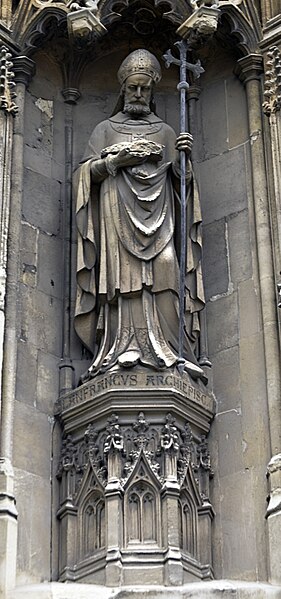Lanfranc, OSB was a celebrated Italian jurist who renounced his career to become a Benedictine monk at Bec in Normandy. He served successively as prior of Bec Abbey and abbot of St Stephen's Abbey in Caen, Normandy and then as Archbishop of Canterbury in England, following its conquest by William the Conqueror. He is also variously known as Lanfranc of Pavia, Lanfranc of Bec, and Lanfranc of Canterbury.
Statue of Lanfranc from the exterior of Canterbury Cathedral
Signatures at the council of Winchester (1072). The large crosses are the signatures of William and Matilda, the one under theirs is Lanfranc's, and the other bishops' are under his.
Near-contemporary depiction of Lanfranc in Oxford Bodleian Library MS Bodley 569
Bec Abbey, formally the Abbey of Our Lady of Bec, is a Benedictine monastic foundation in the Eure département, in the Bec valley midway between the cities of Rouen and Bernay. It is located in Le Bec Hellouin, Normandy, France, and was the most influential abbey of the 12th-century Anglo-Norman kingdom.
South side of the abbey, the church and the monks' cells seen from Le Bec-Hellouin
Seal Abbaye du Bec.
West side of the Tour Saint-Nicolas, between the ancient pottery to its left and the monks' residential building to its right
Abbey church







